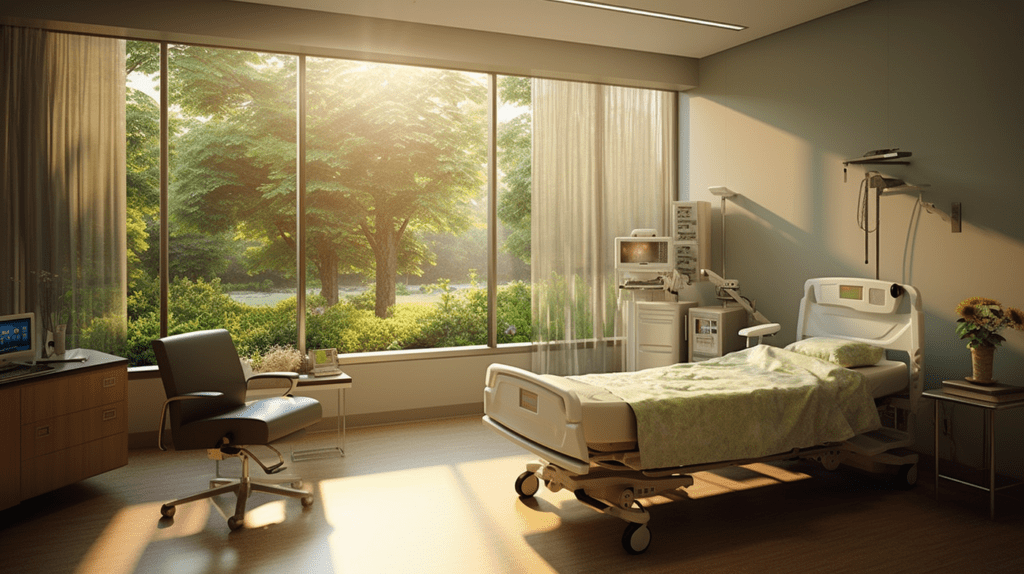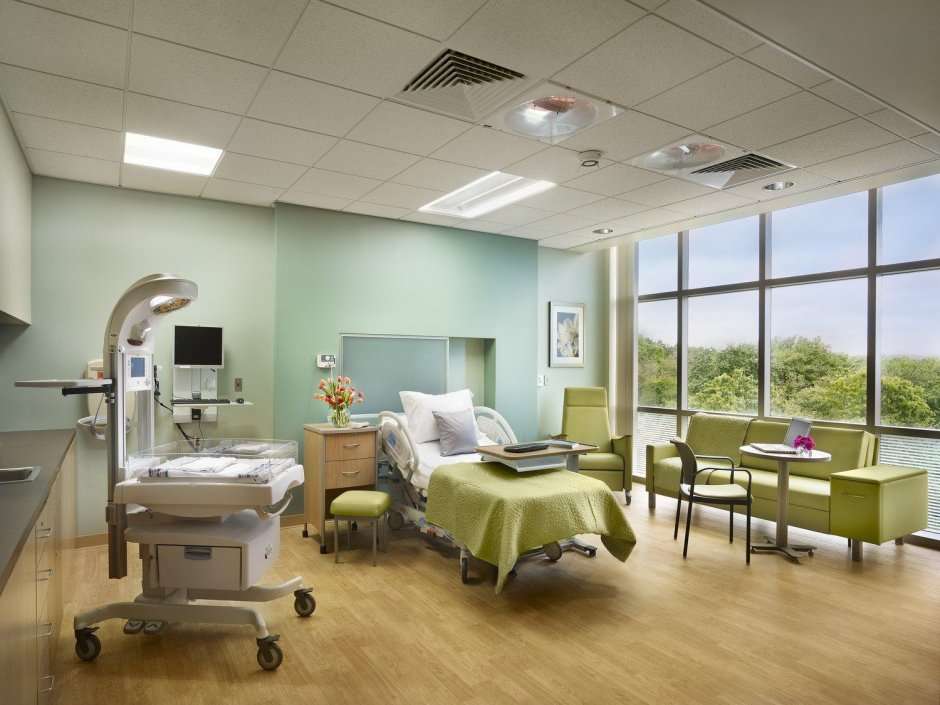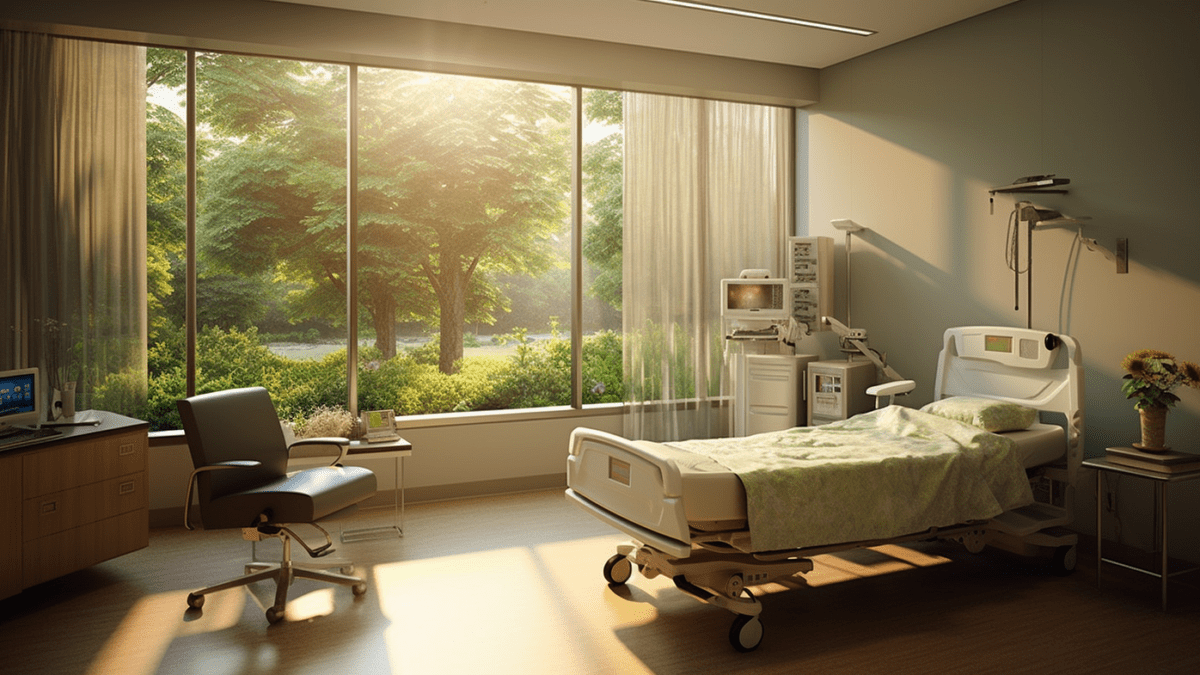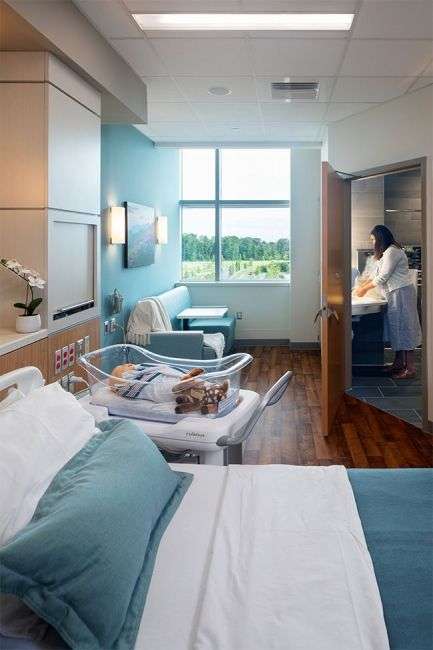
Investing In Medical Staff: A Key to Healthcare Excellence
June 7, 2024
NABH Accreditation for Hospitals: A Guide to Quality and Safety in Indian Healthcare
June 13, 2024Introduction
In modern hospital design, the integration of natural light is crucial for enhancing patient recovery and staff well-being. Research shows that natural light reduces stress, speeds up healing, and lowers the risk of infections due to its antimicrobial properties. It also helps regulate circadian rhythms, boosting mood and overall health for patients and staff. Additionally, using natural light supports sustainability by reducing energy consumption and operational costs. Thus, natural light is a fundamental element in creating effective and healing healthcare environments.
The Science Behind Natural Light
So, what makes natural light so special? It’s more than just sunlight pouring through a window. Natural light, with its full spectrum of colors, is essential for regulating our circadian rhythms—the internal clock that dictates our sleep-wake cycles. Exposure to natural light helps maintain healthy levels of serotonin, which improves mood, and melatonin, which regulates sleep.
Historical Perspective
Hospital design has come a long way. Historically, hospitals were designed with large windows and open courtyards to allow for maximum natural light and ventilation. Over time, as medical technology advanced, these designs shifted towards more enclosed spaces. Now, we’re seeing a revival of these natural elements in modern designs.
Modern Hospital Design Trends
Today’s hospitals are integrating natural elements like never before. Think large windows, skylights, and open atriums. These design choices are not just aesthetic—they are backed by research showing the positive effects of natural light on health and recovery. Technological advancements have also made it easier to incorporate these elements seamlessly.

Benefits of Natural Light in Hospitals
Physical Health Benefits
The physical health benefits of natural light in hospitals are undeniable. Studies have shown that patients with access to natural light recover faster and have shorter hospital stays. This is particularly true for patients recovering from surgery or those with chronic illnesses.
Mental Health Benefits
Natural light also plays a crucial role in mental health. Exposure to natural light can enhance mood, reduce feelings of depression, and decrease stress levels. For patients who might be feeling anxious about their hospital stay or their health, natural light can provide a significant boost to their overall well-being.
Staff Well-being
It’s not just patients who benefit. Hospital staff working in well-lit environments report higher job satisfaction and better overall performance. Natural light can reduce fatigue, increase alertness, and improve morale, leading to better patient care.
Design Strategies for Maximizing Natural Light
Architectural Techniques
Maximizing natural light in hospitals starts with thoughtful architectural design. Strategic window placement is crucial. Large, floor-to-ceiling windows, atriums, and skylights can flood interiors with light. Hospitals can also be designed with orientation in mind to capture the maximum amount of daylight.
Interior Design Approaches
Inside the hospital, the use of reflective surfaces and light color schemes can enhance the distribution of natural light. Mirrors, light-colored walls, and floors can help bounce light around the space, making it feel brighter and more open.

Challenges and Solutions
While the benefits are clear, incorporating natural light into hospital design does come with challenges. Balancing natural light with patient privacy can be tricky. Solutions include using frosted or tinted glass and strategic landscaping. Managing glare and heat is another concern, but innovations like smart glass and adaptive shading can help mitigate these issues. Cost is always a factor, but the long-term benefits often outweigh the initial investment.
Technological Innovations
Speaking of smart glass and adaptive shading, technology is playing a significant role in modern hospital design. Smart glass can change its opacity based on the amount of sunlight, providing both light and privacy when needed. Integrating natural light with artificial lighting systems can also ensure that patients and staff receive consistent light levels throughout the day.
Sustainability and Natural Light
Natural light isn’t just good for people—it’s good for the planet. By reducing the need for artificial lighting, hospitals can significantly cut down on their energy consumption. This not only lowers operational costs but also reduces the environmental impact, contributing to overall sustainability goals.
Future of Hospital Design
The future of hospital design looks bright—literally and figuratively. As awareness of the benefits of natural light grows, we can expect to see even more innovative designs that prioritize natural elements. Emerging trends include the use of biophilic design, which incorporates natural elements like plants and water features, alongside ample natural light.
Patient and Staff Feedback
Feedback from patients and staff at hospitals that prioritize natural light has been overwhelmingly positive. Many patients report feeling more comfortable and less stressed, while staff members appreciate the boost in mood and productivity. This feedback underscores the importance of continuing to prioritize natural light in future hospital designs.
Conclusion
Natural light is more than just a design feature—it’s a critical component of modern hospital design that can significantly impact physical and mental health, staff well-being, and sustainability. By incorporating natural light into hospitals, we can create environments that promote healing, boost morale, and contribute to a healthier planet. The evidence is clear: the future of hospital design is bright. Partner with Hospertz to create a facility that harnesses the power of natural light to improve lives and set new benchmarks in healthcare excellence.




